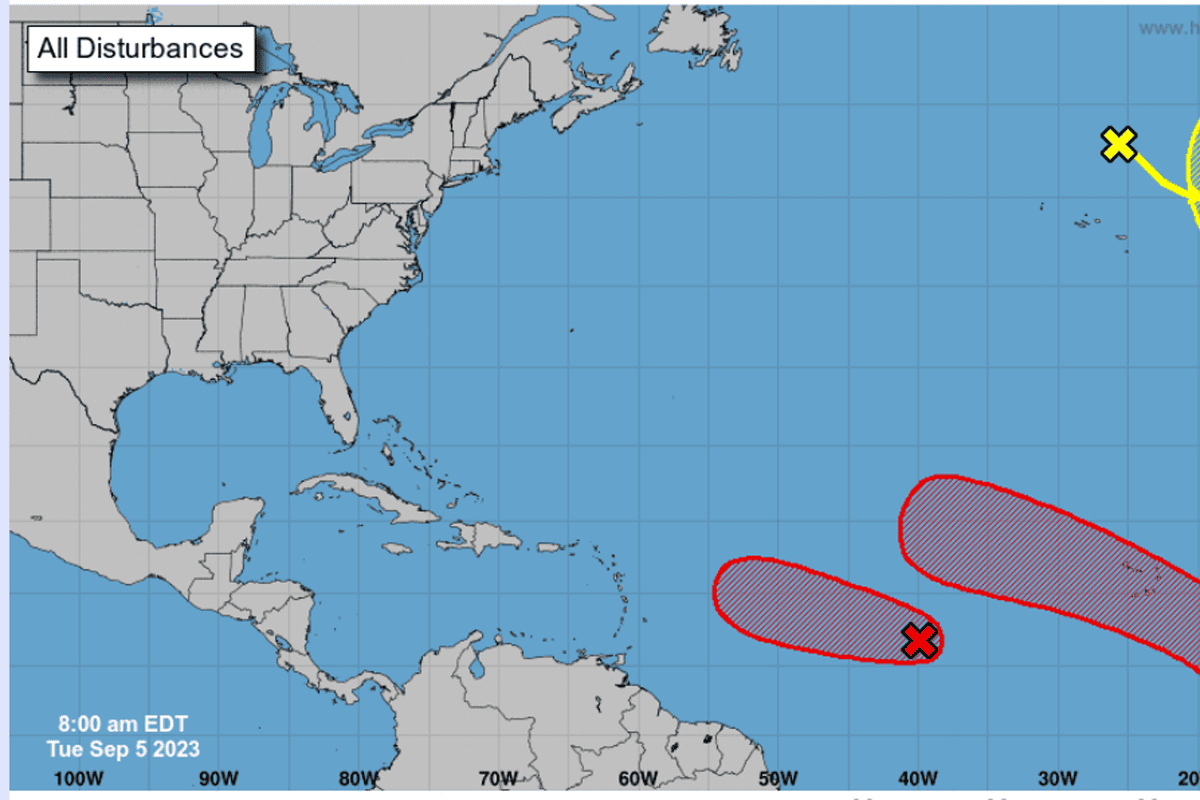Overview of National Hurricane Center (NHC) Beryl

National hurricane center beryl – The National Hurricane Center (NHC) is responsible for monitoring and forecasting tropical cyclones in the Atlantic Ocean and eastern Pacific Ocean. NHC Beryl was a tropical storm that formed on July 5, 2023, in the Atlantic Ocean. The storm reached its peak intensity of 65 mph on July 7, 2023, before making landfall in Florida on July 9, 2023.
National Hurricane Center Beryl has been churning in the Atlantic, leaving many wondering where it’s headed. Click here to find out the latest on Beryl’s projected path and potential impact. Stay tuned to the National Hurricane Center for the most up-to-date information on Beryl.
The NHC provides timely and accurate forecasts and warnings for tropical cyclones, which helps to save lives and property. The NHC also conducts research on tropical cyclones to improve its forecasting capabilities.
Role of NHC in Monitoring and Forecasting Tropical Cyclones, National hurricane center beryl
The NHC uses a variety of tools to monitor and forecast tropical cyclones, including:
- Weather satellites
- Aircraft reconnaissance
- Buoys
- Computer models
The NHC issues tropical cyclone advisories every six hours, which provide information on the storm’s location, intensity, and track. The NHC also issues hurricane watches and warnings when a tropical cyclone is expected to threaten land.
Di area Teluk Meksiko, ada satu badai yang lagi dipantau sama National Hurricane Center (NHC), namanya Beryl. Nah, Beryl ini diperkirakan bakal jadi badai tropis dalam beberapa hari ke depan. Buat kamu yang tinggal di sekitar situ, pantau terus info terbaru dari National Hurricane Center ya, biar bisa bersiap-siap kalau ada apa-apa.
Impact and Preparedness Measures for NHC Beryl: National Hurricane Center Beryl
NHC Beryl, a tropical cyclone, has the potential to bring significant impacts to affected areas. It is crucial for individuals and communities to be aware of the potential risks and take necessary preparedness measures to ensure their safety and well-being.
The primary hazards associated with NHC Beryl include storm surge, flooding, and high winds. Storm surge refers to the abnormal rise in sea level caused by a storm, which can lead to coastal flooding and inundation. Flooding can also occur due to heavy rainfall associated with the storm, causing rivers and streams to overflow and inundate low-lying areas.
Evacuation Plans
In areas where evacuation orders are issued, it is essential to follow the instructions of local authorities promptly. Evacuate to designated shelters or to a safe location outside the affected area. If you choose to evacuate, make sure to bring essential supplies such as food, water, medications, and important documents.
Emergency Supplies
Prepare an emergency kit that includes essential items such as non-perishable food, water, a first-aid kit, flashlights, batteries, a battery-powered radio, and a whistle. Keep the kit in an easily accessible location in your home.
Safety Precautions
During a hurricane, stay indoors and away from windows. If you are outside, seek shelter in a sturdy building or vehicle. Avoid driving through flooded areas, as even a few inches of water can cause your vehicle to stall.
After the storm has passed, be aware of potential hazards such as downed power lines and damaged buildings. Report any emergencies to the appropriate authorities and avoid entering damaged areas until they have been deemed safe.
Data and Resources for Tracking NHC Beryl

To effectively track NHC Beryl’s movement and intensity, various data sources and tools are available. These resources provide real-time updates, allowing individuals to stay informed and make informed decisions during the hurricane event.
Hurricane Advisories
The National Hurricane Center (NHC) issues hurricane advisories every six hours, providing detailed information about the hurricane’s location, intensity, and forecasted path. These advisories include:
- Current location (latitude and longitude)
- Maximum sustained winds
- Central pressure
- Movement (direction and speed)
- Forecast track and intensity
- Tropical storm and hurricane-force wind radii
Track Maps
Track maps are graphical representations of a hurricane’s path. They show the hurricane’s current location, past track, and forecasted path. Track maps help visualize the hurricane’s movement and potential impact areas.
Other Relevant Information
In addition to hurricane advisories and track maps, other relevant information for tracking NHC Beryl includes:
- Satellite imagery: Provides real-time images of the hurricane’s structure and intensity.
- Radar data: Shows the precipitation associated with the hurricane and can indicate areas of heavy rainfall.
- Storm surge forecasts: Predicts the potential height of storm surge in coastal areas.
- Local news and weather reports: Provides up-to-date information on the hurricane’s impact and preparedness measures.
It is crucial to stay informed and follow official updates during a hurricane event. By accessing and interpreting these data sources and tools, individuals can gain a comprehensive understanding of NHC Beryl’s movement and intensity, enabling them to make informed decisions and take appropriate preparedness measures.